Known for his 3D printed guitars, Olaf Diegel now turned his attention to saxophones and created a prototype of a 3D printed alto sax he had been challenged to make by the head of 3D Systems, Avi Reichental, while attending Euromold 2013 in Frankfurt, Germany.
Saxophons are considerably more complex than guitars, so it’s no wonder that it took Diegel so long to 3D print one.
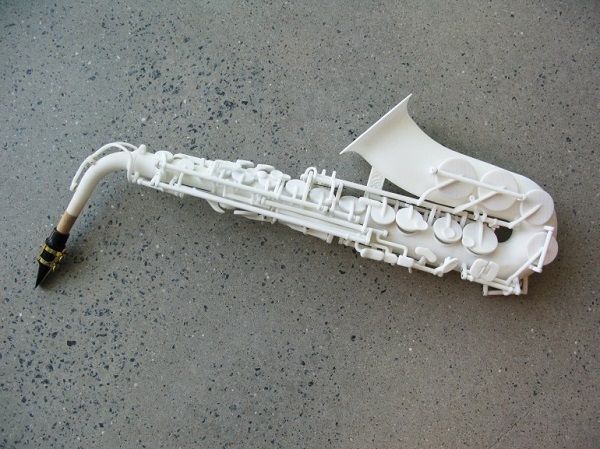
In an interview with GizMag, Olaf Diegel said that “This first one was printed from my own analysis of a sax, but based on measurements, and the mechanisms/linkages from a traditional sax. It really surprised me as to how mechanically complex a sax was and it did make me wonder as to whether the mechanisms could be simplified.”
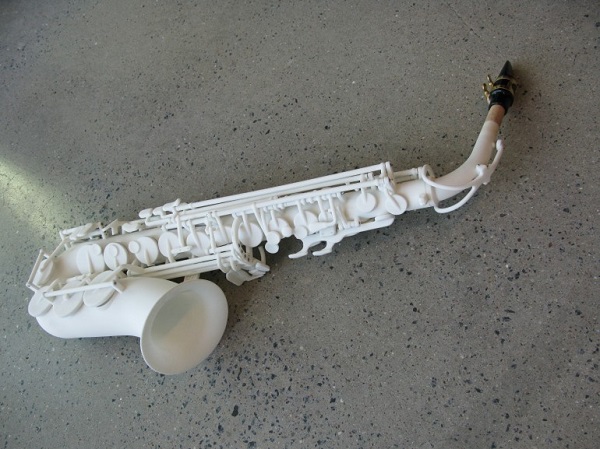
When talking about the complexity of a saxophone, he mentioned that “On a conventional sax most of the springs are just bits of spring wire that are hammered into the metal upstands of the sax, and then bent into shape to provide the right amount of tension to each key. But, when I try the same thing on a plastic upstand, there is not quite enough grip, so the springs rotate themselves into a position that doesn’t give the right spring tension for the key. That’s why I want to integrate the spring directly into the key. So in this case I am doing it because I think it will work better than a hybrid traditional sax design. But the down-side is that it will take me several iterations of key design to figure out a ‘formula’ that allows me to get the right amount of tension (it’s quite complex as some keys need more tension than others depending on whether they trigger more than one pad at a time).”
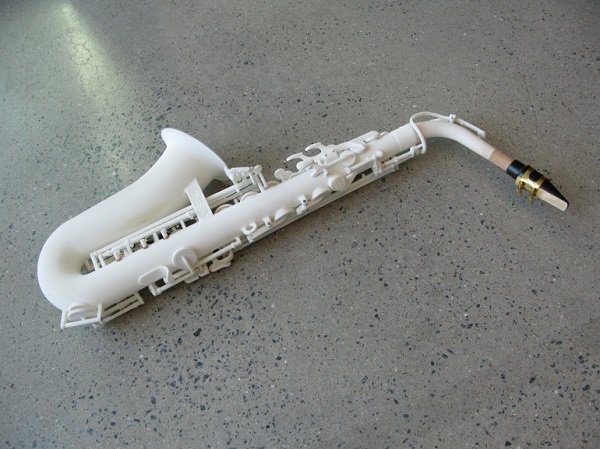
The 3D printed alto saxophone makes a great addition to the 3D printed band that Diegel is working on.
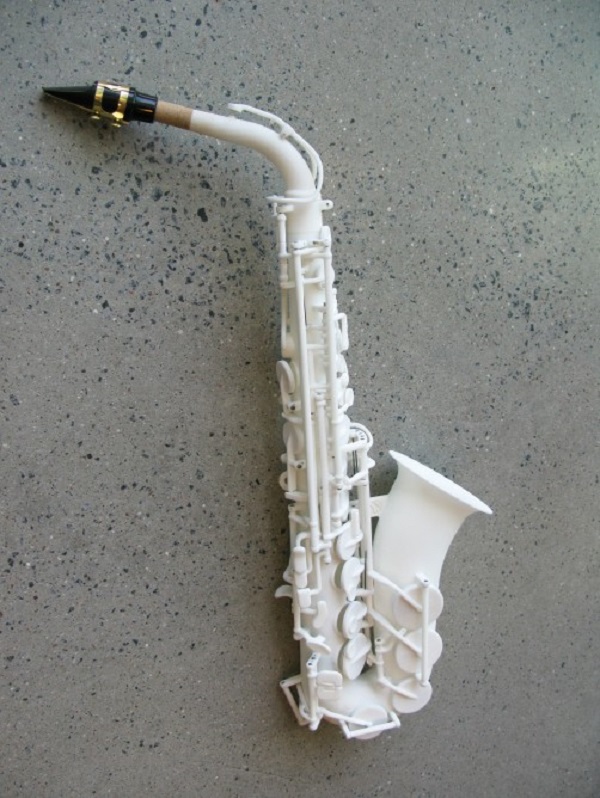
Weighing only 575 g (20 oz), Diegel’s 3D printed sax is about 1/4 as heavy as a normal alto saxophone. Supposing that 3D printed musical instruments will become mainstream at some point, musicians will be able to perform longer on stage, due to the reduced burden. Or at least that’s how things should be.
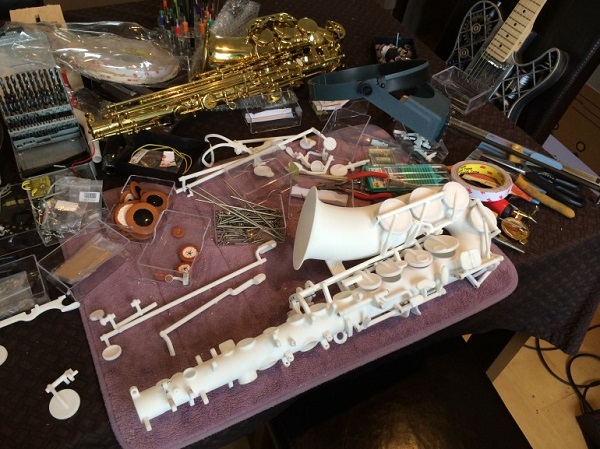
Diegel concluded that “The aesthetic redesign shouldn’t take too long, but I am guessing the redesign of the keys will take me a few months of iterations to figure out the magic formula that makes it all work,” he said. “So my guess for the final version is early next year. Not sure yet whether the sax will be available for purchase. Once I’ve got the final design done, it will be a matter of seeing whether it’s commercially viable. I am very much hoping it will be, and that’s one of the reasons why I am working on changing the design to keep the assembly and tweaking down to a minimum.”
Be social! Follow Walyou on Facebook and Twitter, and read more related stories about liquid metal 3D printing, and the fossil models that can be 3D printed at home.










